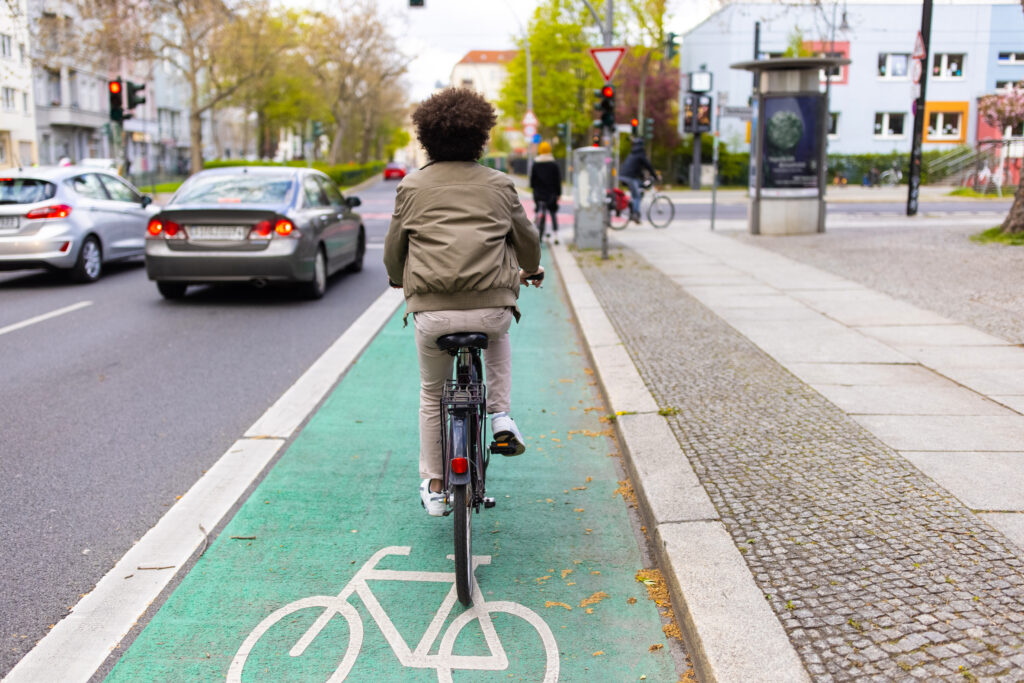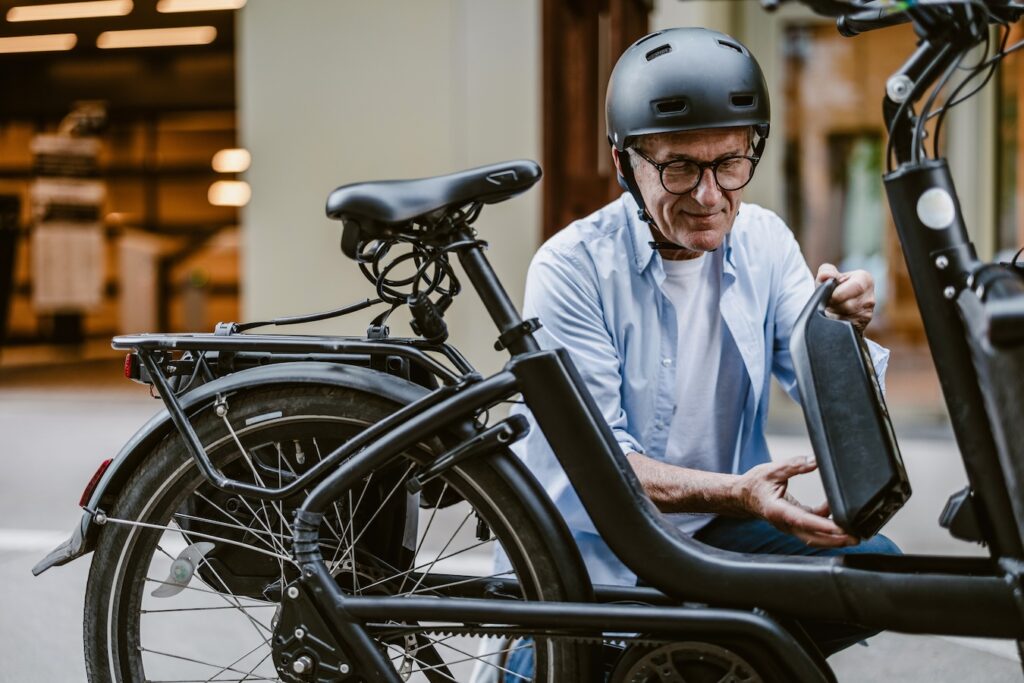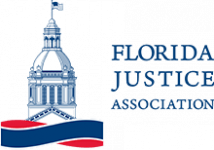Understanding Traffic Laws for Bicycles Under Florida Law
Riding a bicycle in Florida is a great way to explore the state’s diverse landscapes and enjoy its year-round warm climate. From the scenic coastline to the bustling city streets, Florida offers numerous paths and trails tailored for cyclists of all levels. Not only is biking an excellent form of exercise, but it also promotes an eco-friendly mode of transportation, reducing traffic congestion and minimizing carbon footprints. It is important for bicycle riders to understand Florida law that applies to persons riding bicycles. Cyclists can be vulnerable road users and must follow Florida’s bicycle laws to protect themselves from injury. If you have been injured in a bicycle accident, contact Fran Haasch Law Group Accident & Injury Lawyers for a free consultation to learn more about your rights to seek compensation for your injuries.

Cyclists Must Follow the Same Traffic Laws as Motor Vehicles
Under Florida law, cyclists are required to adhere to the same traffic regulations that govern motor vehicles when on a roadway. This means that cyclists must ride in the same direction as traffic, obey all traffic controls and stop signs, and signal their turns to inform other road users of their actions. Additionally, bicycles should be equipped with proper lighting when ridden at night: a white light visible from at least 500 feet to the front and a red reflector and light visible from 600 feet to the rear. By following these rules, cyclists contribute to safer roadways and help foster a harmonious relationship between different types of road users.
Specific Bicycle Laws in Florida
In addition to following general traffic laws, there are specific regulations in Florida that bicycle riders must comply with for their safety and the safety of others.
Roadway Position
One key regulation for cyclists traveling on a roadway less than the normal speed of traffic is the requirement to use designated bicycle lanes when they are available. If a bike lane is not present, cyclists should ride as close as practicable to the right-hand curb or edge of the roadway, except under certain conditions such as when avoiding hazards, including a fixed or moving object, or when making a left turn.
Persons riding bicycles are prohibited from riding more than two abreast except on a bike path. While riding two abreast, cyclists may not impede traffic when traveling less than the normal speed of traffic. In narrow bike lanes, cyclists must ride single-file and within the bike lane. Additionally, if there is a substandard-width lane, cyclists may ride two abreast to avoid hazards or to overtake another cyclist.
Who Must Wear a Bicycle Helmet?
Furthermore, Florida law mandates that a bicycle rider or passenger under 16 years of age must wear a properly fitted and fastened bicycle helmet that meets nationally recognized standards.
Carrying Passengers
Another regulation pertains to the number of passengers a bicycle can carry. Bicycles are designed to hold the number of persons for which they are equipped, meaning one seat equals one rider unless the bike is specifically constructed to accommodate more, such as a tandem bike.
Carrying Packages
Florida law prohibits cyclists from carrying any package, bundle, or article that prevents the rider from keeping at least one hand on the handlebars. Proper observance of these regulations helps ensure that cyclists and other road users can share the road safely and efficiently.

Rules for Riding a Bicycle on a Sidewalk in Florida
In Florida, cyclists are allowed to ride on sidewalks unless there are local ordinances prohibiting it. When riding on a sidewalk, cyclists must yield the right-of-way to pedestrians and give an audible signal before overtaking and passing them. This could be done by using a bell or simply calling out to ensure pedestrians are aware of the cyclist’s presence. Additionally, cyclists are expected to operate their bicycles in a manner that is safe and considerate of others using the sidewalk. While riding on sidewalks can be a safer option for less experienced cyclists or in busy traffic areas, it is crucial to remain cautious and respectful to all sidewalk users.
Rules for Lighting on Bicycles
Proper lighting is essential for ensuring the safety of cyclists, particularly during low-light conditions or night-time riding. Florida law mandates specific lighting requirements to enhance visibility and reduce the risk of accidents.
- Front Light: All bicycles operated between sunset and sunrise must be equipped with a white light that is visible from a distance of at least 500 feet in the front. This helps oncoming vehicles, pedestrians, and other cyclists to see the bicycle clearly, reducing the likelihood of collisions.
- Rear Light and Reflector: A red reflector and a red light must be present on the rear side of the bicycle, visible from a distance of 600 feet. These lights and reflectors serve to alert motorists and other road users to the presence of the bicycle from behind.
- Additional Considerations: While not explicitly required by law, cyclists are encouraged to use additional lighting, such as wheel or frame lights, to further increase their visibility. Wearing reflective clothing or accessories can also significantly enhance a cyclist’s safety during night riding.
By adhering to these lighting rules, cyclists can ensure they are seen on the road, thereby reducing the risk of accidents and improving overall road safety for all users.

Making Left Turns on a Bicycle in Florida
When making a left turn, bicyclists in Florida must follow specific procedures to ensure their safety and that of other road users. Cyclists have two options for making left turns:
- Vehicular-style Left Turn: This method involves the cyclist moving into the left lane or left-turn lane when it is safe to do so, just as a motor vehicle would. The cyclist should signal their intention to turn, check for traffic, and then proceed to make the turn when it is safe. After turning, the cyclist should re-enter the right lane or bike lane.
- Pedestrian-style Left Turn: For cyclists who are uncomfortable making a vehicular-style left turn or in high-traffic conditions, the pedestrian-style turn can be safer. To execute this turn, the cyclist should approach the intersection on the right side of the roadway, ride straight through the intersection to the far-side crosswalk, then dismount and walk the bicycle across the intersection as a pedestrian. Alternatively, the cyclist can ride across using the crosswalk, ensuring to yield the right-of-way to pedestrians.
By understanding and properly executing these left-turn techniques, bicyclists can safely navigate intersections and contribute to the overall safety of Florida’s roadways.
Signaling Turns
Properly signaling turns is a critical aspect of safe cycling and is required by Florida law. Communicating your intentions to other road users helps prevent accidents and ensures smoother traffic flow. Here are the standard hand signals that cyclists should use:
- Left Turn: Extend your left arm straight out horizontally.
- Right Turn: You have two options for signaling a right turn. You can either extend your right arm straight out horizontally or extend your left arm upward at a 90-degree angle.
- Stopping or Slowing Down: Extend your left arm downward at a 90-degree angle with your palm facing backward.
It’s important to make sure your signals are clear and visible. Start signaling well before you intend to turn or stop, giving ample time for other road users to react. Additionally, always check over your shoulder for traffic before executing your turn or stop, ensuring it is safe to proceed. By consistently using these hand signals, cyclists can communicate effectively with motorists, pedestrians, and other cyclists, enhancing safety for all road users.
Rules for Using Headsets on a Bicycle in Florida
In Florida, the use of headsets or headphones while riding a bicycle is regulated by law to ensure cyclists maintain full awareness of their surroundings. According to Florida Statute 316.304, cyclists are generally prohibited from wearing headsets, headphones, or other listening devices in both ears simultaneously. This restriction is vital for the safety of the cyclist and others, as it allows the rider to hear ambient sounds such as approaching vehicles, emergency sirens, and other potential hazards that require quick reaction times.
However, there are exceptions to this rule. Cyclists are permitted to use headsets or headphones if they cover only one ear, allowing the other ear to remain open to environmental sounds. Additionally, devices used in conjunction with hearing aids are not restricted by this law.
Florida Laws for E-Bikes
Electric bicycles, commonly known as e-bikes, are becoming an increasingly popular mode of transportation in Florida. As with traditional bicycles, e-bikes are subject to specific regulations to ensure safety and proper usage on the roadways. Understanding these laws is crucial for e-bike users to comply with the legal requirements and to maintain safe practices.
- Definition and Classification: Florida classifies e-bikes into three categories based on their maximum assisted speed and the functionality of the motor.
- Class 1 E-Bikes: Equipped with a motor that provides assistance only while the rider is pedaling, with a maximum assisted speed of 20 mph.
- Class 2 E-Bikes: Equipped with a motor that can propel the bike without pedaling, up to a maximum speed of 20 mph.
- Class 3 E-Bikes: Equipped with a motor that provides assistance only while the rider is pedaling, with a maximum assisted speed of 28 mph.
- Where to Ride: E-bikes are generally permitted to operate on the same roadways, bike lanes, and multi-use paths as traditional bicycles. However, local governments have the authority to enact ordinances restricting or prohibiting the use of e-bikes on certain paths or trails. It is important for e-bike riders to be aware of and comply with local regulations.
- Helmet Requirements: Riders of Class 3 e-bikes and all e-bike riders under the age of 16 are required by law to wear a helmet that meets federal safety standards. While helmets are not mandated for riders of Class 1 and Class 2 e-bikes who are 16 and older, wearing a helmet is highly recommended for all riders to enhance safety.
- Age Restrictions: Individuals under the age of 16 are not permitted to operate Class 3 e-bikes. There are no age restrictions for operating Class 1 and Class 2 e-bikes, but younger riders should always wear helmets and ride under adult supervision when possible.
- Speed Limits and Operation: E-bike riders must adhere to the same speed limits as traditional bicycles when operating on bike lanes or multi-use paths. Additionally, e-bike users should ride in a predictable manner, obey all traffic signals and signs, and use hand signals to indicate turns or stops.
By understanding and following these regulations, e-bike riders in Florida can enjoy a safe and lawful riding experience, contributing to the overall safety and harmony on the roads and paths.

Steps to Take After a Florida Bicycle Accident
Experiencing a bicycle accident can be a distressing and confusing event. However, knowing the appropriate steps to take immediately following an accident can significantly impact your safety and legal outcomes. Here are essential actions to consider if you find yourself involved in a bicycle accident in Florida:
- Ensure Your Safety: Move to a safe location away from traffic if you are able to do so without worsening any injuries. Your safety and the safety of others involved is the priority.
- Call for Medical Assistance: Seek medical attention promptly, even if you don’t feel seriously injured. Some injuries may not be immediately apparent, and a thorough medical evaluation is crucial for your health and any potential legal claims.
- Contact Law Enforcement: Report the accident to the police. An official accident report will be valuable for insurance claims and any legal proceedings. Provide accurate and thorough information to the responding officers.
- Exchange Information: Obtain the names, contact information, and insurance details of all parties involved in the accident, including any witnesses. If the accident involves a motor vehicle, collect the driver’s license and vehicle registration information.
- Document the Scene: Take photos and videos of the accident scene, your bicycle, any vehicles involved, and your injuries. This visual evidence can be crucial for insurance claims and legal cases.
- Seek Legal Advice from the Fran Haasch Law Group Accident & Injury Lawyers: Consult with an attorney who specializes in bicycle accidents. The bicycle accident attorneys at our firm offer a free initial consultation. We can guide you through the process, protect your rights, and help you obtain the compensation you may be entitled to.
- Understanding Contingency Fee Arrangements: A contingency fee agreement means that the attorney’s fees are contingent upon the successful resolution of your case. There are no upfront costs, the attorney fee will be a percentage of your recovery. Importantly, if the attorney does not win or settle your case, you will owe no fees
- Notify Your Insurance Company: Report the accident to your insurance provider as soon as possible. Avoid making any statements until you have spoken with your bicycle accident lawyer.
By following these steps, you can better navigate the aftermath of a bicycle accident in Florida, ensuring you receive the appropriate care and legal support needed to recover and protect your interests.
Fran Haasch Law Group Advocates for Bike Accident Victims
At Fran Haasch Law Group Accident & Injury Lawyers, we are staunch advocates for the rights of bicycle accident victims. Our dedicated team of bicycle accident attorneys understands the unique challenges faced by cyclists on the road and the severe impact that accidents can have on their lives. With years of experience in personal injury law, we are committed to offering compassionate and comprehensive legal support to individuals who have suffered from bicycle accidents. Contact us for a free consultation to discuss your case and explore the legal options available to you.











